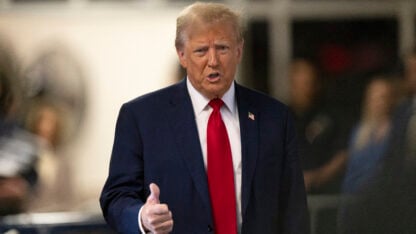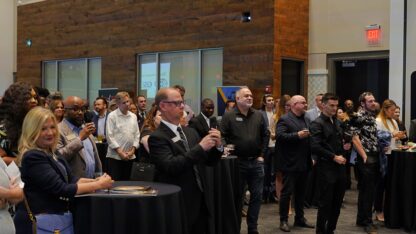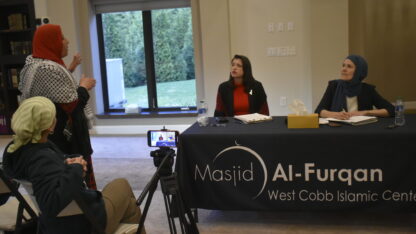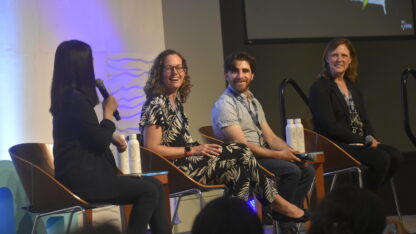‘The National Parks Series’ Highlights Natural Beauty And The People Behind The Parks
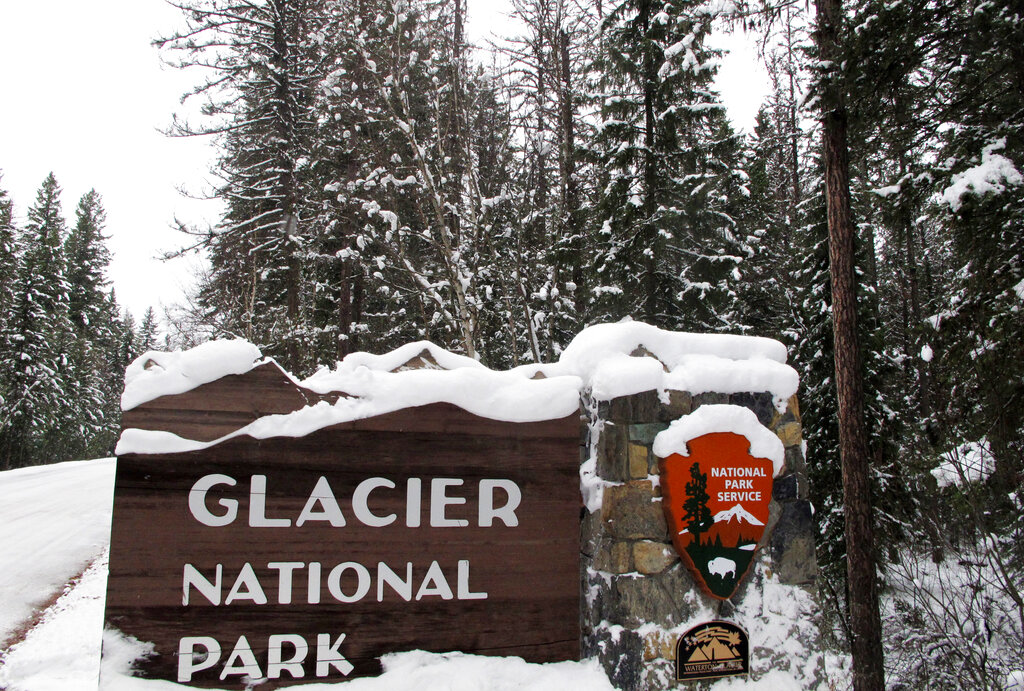
Snow covers the entrance sign to Glacier National Park in West Glacier, Montana.
Matt Volz, File / Associated Press
President Theodore Roosevelt established over 230 million acres of public lands during his presidency. On the importance of conservation, Roosevelt wrote, “We have become great because of the lavish use of our resources. But the time has come to inquire seriously what will happen when our forests are gone, when the coal, the iron, the oil, and the gas are exhausted, when the soils have still further impoverished and washed into the streams, polluting the rivers, denuding the fields and obstructing navigation.”
The documentary series “The National Parks: America’s Best Idea,” directed by Ken Burns, chronicles the creation of the National Parks and follows the stories of those who worked and continue to work to make them a reality. “City Lights” host Lois Reitzes spoke with Dayton Duncan, writer and producer of the series.
Duncan explained that while the six-episode series only took about 45 seconds to get approved as an idea, it took a decade to complete.
“We put it together, we take it apart, put it together, take it apart. Try to improve it with each of those iterations,” said Duncan. “So we take more time, but that’s what we love.”
The films highlight the roles of people like John Muir and President Theodore Roosevelt in the creation and expansion of the National Parks as well as other protected lands.
Muir, for example, was a Scottish immigrant who was interested in the natural landscapes of the United States. After a trip to Yosemite, a California State Park at the time, he started writing about the beauty he found in nature.
Duncan said that Muir became a voice in the wilderness as a result of that writing.
“And what a voice he had talking about his experience and seeing nature just as something that should be put to use,” explained Duncan. “Certain places in nature had a different purpose, and that was simply to connect you to something larger than yourself.”
The series also looks at modern park advocates, like Park Ranger Shelton Johnson, a black man who grew up in inner-city Detroit.
Johnson tells the story of getting a summer job in Yellowstone despite never having visited a National Park. An encounter with a bison as he stepped off the bus changed him.
“Like John Muir,” said Duncan, “that experience just transformed his soul and his life, and then he got a job as a park ranger.”
Descriptive phrases for the beauty and wonder of the National Parks are also found throughout the series. “Earth’s maternity ward” is just one example that Duncan used to talk about new land forming as a result of a lava flow in Hawai’i Volcanoes National Park.
“It’s like going into…the adrenaline and soulful rush that you get if you go into a maternity ward and see those little babies, particularly if one of them is yours, that, just, exaltation that you get from it,” said Duncan.
Many of Ken Burns’s films feature well-known actors and celebrities reading quotes said by different historical figures. Duncan said that it isn’t difficult to convince people to be a part of the projects.
“I think that they appreciate the care that we take, they appreciate the final film and the quality that they believe it has, and they’re happy to do it,” said Duncan.
On the importance of the Parks, Duncan sees their existence as an extension of the Declaration of Independence.
“[They] can connect you to nature. They can connect you to yourself. They can connect you to other people. They can restore your spirit. They can make you healthier. They can make you better,” said Duncan. “Those things need to belong to everybody, and they do.”
“National Parks: America’s Best Idea” is available to stream on PBS Passport. ATLPBA will broadcast the series starting July 7 at 10 p.m.

